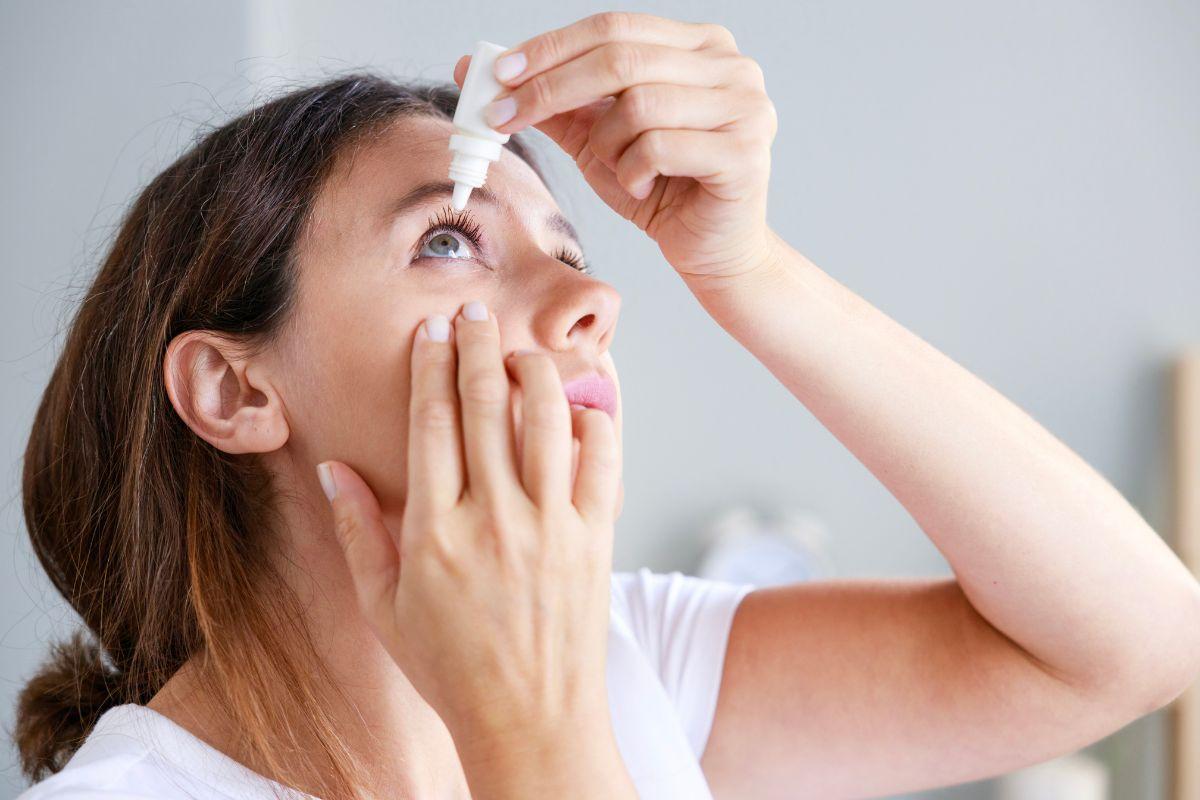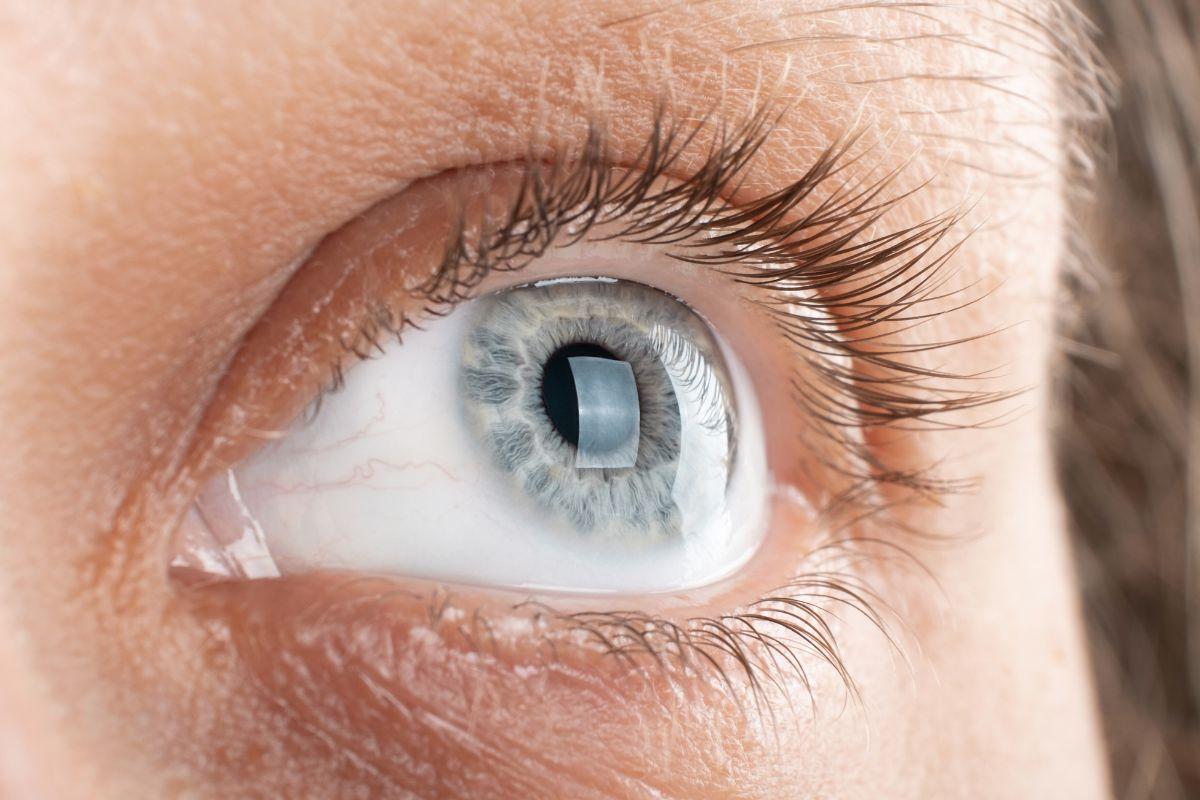Dry eye disease is a common condition that occurs when your tears are not able to provide adequate lubrication for your eyes. Tears can be inadequate and unstable for many reasons. For example, dry eyes may occur if you don’t produce enough tears or if you produce poor-quality tears. This tear instability leads to inflammation and damage of the eye’s surface. Also the tear film, which is a thin, protective layer of moisture that covers the surface of your eye, keeps it comfortable, clear, and healthy.
If the tear film becomes unstable for example, if your eyes don’t make enough tears or if the tears dry up too quickly you might notice symptoms like dryness, burning, or blurry vision.
Dry eyes feel uncomfortable. If you have dry eyes, your eyes may sting or burn. You may experience dry eyes in certain situations, such as on an airplane, in an air-conditioned room, while riding a bike or after looking at a computer screen for a few hours.
What Causes Dry Eyes?
Lifestyle & Environmental Factors
- Screen time fatigue: Staring at a screen makes you blink less, which dries out your eyes.
- Environmental exposure: Air conditioning, heating, wind, smoke, or low humidity (common during winter) can speed up tear evaporation.
- Contact lenses: Extended wear or ill-fitting lenses can reduce tear film stability (some lens materials may not retain moisture as effectively).
Age & Hormonal Changes
As we age (especially after 50) tear production naturally declines. Women may experience dry eyes more often around menopause, due to hormonal shifts.
Medical Conditions & Medications
Certain health issues like autoimmune diseases (e.g., Sjögren’s syndrome), thyroid conditions, or blepharitis (eyelid inflammation) can interfere with tear production or quality.
Medications such as antihistamines, decongestants, antidepressants, or some of blood pressure drugs can also reduce the tear flow.
Poor Tear Quality (Evaporative Dry Eye)
Even if you make enough tears, if the lipid (oil) layer is unhealthy (often due to blocked meibomian glands) the tears evaporate quickly, leaving your eyes feeling gritty and irritated. Blocked meibomian glands are more common in people with rosacea (skin condition that causes flushing or long-term redness on your face) or other skin disorders (seborrheic dermatitis, atopic dermatitis (eczema), and psoriasis).
Symptoms
Signs and symptoms, which usually affect both eyes, may include:
- A stinging, burning or scratchy sensation in your eyes
- Stringy mucus in or around your eyes
- Sensitivity to light
- Eye redness
- A sensation of having something in your eyes
- Difficulty wearing contact lenses
- Difficulty with nighttime driving
- Watery eyes, which is the body’s response to the irritation of dry eyes
- Blurred vision or eye fatigue
How to Treat and Manage Dry Eyes
Simple Lifestyle Adjustments (Home & Daily Routine)
- Blink more often and follow the “20-20-20” rule: every 20 minutes, look 20 feet away for 20 seconds.
- Use a humidifier, especially in dry indoor environments.
- Protect your eyes outdoors with wraparound sunglasses or moisture chamber glasses.
- Modify screen setup: position your monitor slightly below eye level to blink more naturally.
- Be mindful with contact lenses: consider switching to daily disposables or taking lens-free days.
Over-the-Counter Relief
For most people with occasional or mild dry eye symptoms, it’s enough to regularly use nonprescription eye drops, also called artificial tears.
Artificial tears: Use preservative-free drops (drops made without chemicals that can irritate the eyes) several times a day, especially when your eyes feel gritty.
Eyewarm compresses: A warm, damp cloth (or chamomile tea bags after being steeped in hot water) on closed lids for 5 to 10 minutes can help loosen oily secretions.
When to see a doctor
See your family doctor if you’ve had prolonged signs and symptoms of dry eyes, including red, irritated, tired or painful eyes. Your GP can take steps to determine what is bothering your eyes, refer you to a specialist or recommend treatments such as:
- Prescription drops called cholinergics (pilocarpine, cevimeline) to boost tear production
- Meibomian gland expression or thermal pulsation to clear blocked oil glands
- Punctal plugs to reduce tear drainage and retain moisture. These are tiny silicone plugs (punctal plugs) which close the tiny opening (punctum) that you have in the inner corner of your upper and lower eyelids, conserving both your own tears and artificial tears you may have added.
- Omega-3 supplements (fish oil) may help improve tear quality (but discuss with your doctor first if you’re on any medications or have blood conditions).
Finding Relief and Comfort
Dry eye is a common condition and in most cases, it can be effectively managed.
With the right combination of self-care and professional guidance, many people experience lasting relief.
If your symptoms do not improve, it is important to seek advice from an eye care specialist. You don’t have to live with constant eye discomfort, help is always available, and even simple changes can make a big difference.
For the best care, consider finding an ophthalmology specialist through Doctify to get the right diagnosis and an expertly designed treatment plan
Find the right specialist for you. Doctify uses verified reviews so you can make the best decision for your healthcare.

Find the best Ophthalmologists in the United Kingdom or search for the best specialists globally:
- Ophthalmologists in the United Arab Emirates
- Ophthalmologists in Germany
- Ophthalmologists in Austria
- Ophthalmologists in Ireland
- Ophthalmologists in Australia
Medically Reviewed
Last reviewed on 26/08/2025




